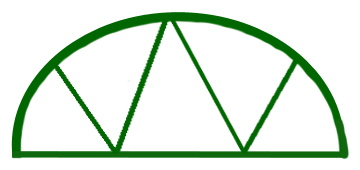I have been diagnosed with a frozen shoulder, and honestly I think the pain is worse than when I herniated a disc and had to get a microdiscectomy. Full disclosure - I am not a medical professional and all info on this page is personal experience and research and if you think you have one you should see a doctor!
I didn't realize the shoulder is so complex, but basically it is made up of 2 bones (humerus=arm and scapula=shoulder blade), 4 major rotator cuff muscles (esubscapularis, supraspinatus, infraspinatus, teres minor) other muscles that attach to the skull/spine or humerus, a number of ligaments, cartilage (labrum) and a capsule that surrounds the joint. Here's a picture I picked up from PhysioRoom.com which is a great article.
In a nutshell, the capsule that is basically in your armpit contracts and sticks to itself. This is bad because the bones in the shoulder rely on the capsule to be nice and fluffy and keep space tolerances correct that allow the humerus to spin under the scapula which enables you to lift your arm over your head and behind you. Otherwise, the bones just move in one direction and pinch the area on your outer shoulder, causing inflammation. Not sure if this is clear. As I said before, I'm not a medical professional!
What happens
First your shoulder starts to bother you, followed by increasingly limited mobility and pain, climbing the mountain as the shoulder freezes more and more. The next step is when it is considered 'frozen', the pinnacle when the capsule contracts so much that it limits the movement of your shoulder since without a functioning capsule, the bones cannot move normally, ending up pinching the tendons in the outer shoulder. After you crest the frozen part, thawing can occur. Lots of documentation I've read said it will go away on its own eventually, possibly up to a year later. I'm not willing to deal with this pain for that long, if I can help it!
Diagnosing
My doc did some range of motion tests to determine that he thought I had a frozen shoulder. I got an xray to be sure it wasn't structural, he gave me a cortisone shot, some exercise to do at home, and sent me on my merry way. A month later, some ranges of motion were improved but not all. So he had me get an MRI with arthrogam. Talk about paiiiiiiin!!!! They injected dye into the shoulder joint, but since the capsule is so contracted and stuck together it couldn't take much liquid and the pressure on the joint was literally unbearable. The normal hands-at-sides MRI was fine, but they wanted me to put the arm over my head... fuggetaboutit!!
The MRI seemed to show that I had a torn rotator cuff. Oh yay. But when I talked to the specialist, he said in the case where there is a frozen shoulder, the MRI can be inconclusive. And besides, he said that we would first need to treat the frozen shoulder anyway and then deal with the rotator cuff injury. In case I do have a torn rotator cuff, I just need to avoid hoisting more than 5 pounds over my head. Prescription: cortisone shot right into the joint coupled with very painful physical therapy. Start with 1 month and it should be 80% better, else get another shot and do therapy another month, possibly up to 16 weeks. Assuming I have crested the frozen pinnacle. If not, it might be longer.
How do you get it? Unfortunately that's unknown, but there are some factors that seem to contribute:
- a woman between 40 and 60 (check)
- thyroid problems (check)
- diabetes (no thank you)
- naturally 'loose' shoulder joint - can go back/side more than 90 degrees (check)
- no daily full range of movement for some reason, may be disease or injury, may be lifestyle
Some initial therapy that I'm doing:
note: some of the stretches require a stick. I use an expandable trekking stick, but a broom or unscrewed handle of a Swiffer does nicely.
It's very important to relax the shoulder and the arm in the stretches. And breathe through the pain.
- Stretch: lay on the bed and using a stick, bring your arms, shoulder width apart, straight up toward the ceiling and over your head. Hold for 5, back down
- Stretch: lay on the bed, arms by side. bring them up at your sides, keeping them in the plane with your body like a snow angel and shoulders not scrunching together. Hold for 5, back down
- Stretch: lay on the bed and using a stick grab with both hands, elbows at 90 degrees. Push the offending side down, keeping the elbow at 90 degrees.
- Stretch: standing, grab a sick or towel behind your back with both hands. Pull your good arm over your head, stretching the back one against your body starting at your hips, eventually fingertips reaching your shoulderblade
- Stretch: stand with offending arm at 90 degrees holding door jamb, twist body away from the arm. Be careful to keep arm at 90 degrees, shoulders relaxed and feel the stretch under your armpit and not in the top of the shoulder
- Don't do anything weight-bearing with your arms (pushing up, downward dog)
- Don't push yoga poses where your hands are over your head
- Even when better, be careful not to twist in the shoulder joint too much. My shoulder is super loose/flexible so I have to be careful not to take it to the point of stopping, but just to the point of reasonable movement
- Possible torn rotator cuff consideration: don't hoist anything over 5 lbs above your head









